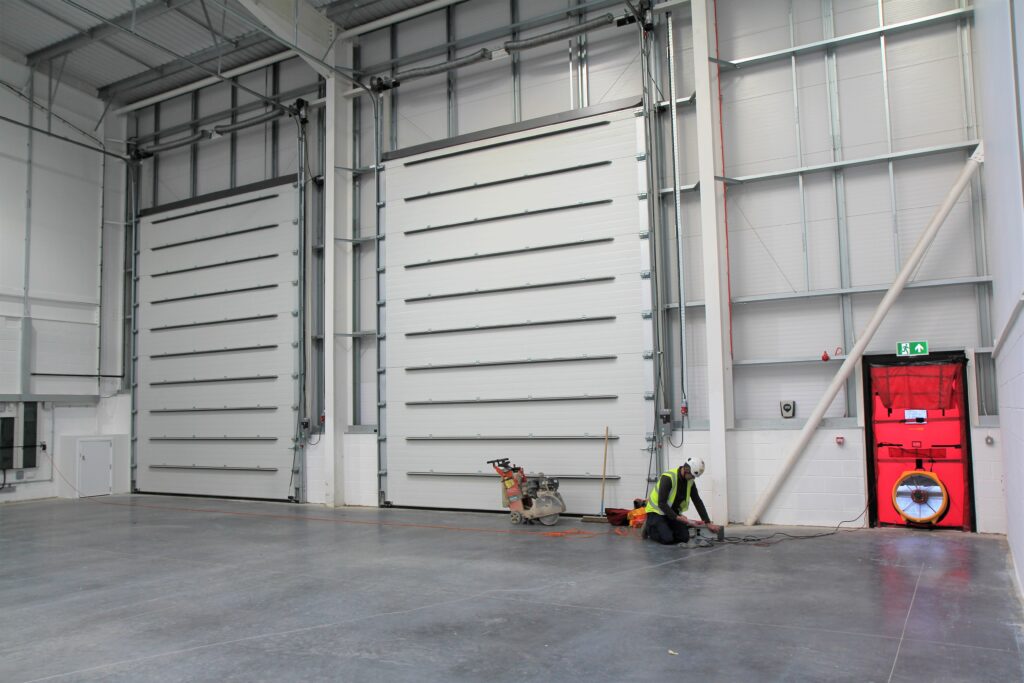What’s it like working in the world of airtightness?
Lee Kenton is a Level 2 airtightness consultant and one of our technical managers here at BE. We wanted to know what life is like inside and outside of his work.
BE: Hi Lee, can you tell us a bit about your job?

I’m heavily involved in the planning of the airtightness projects, where I provide consultancy advice as well as performing some of the testing. I’ll attend site visits at different stages of the build to give advice on the airtightness based on the drawings and the ongoing build. Sometimes this might just be a review of the drawings over a virtual meeting. I’m also interested in the small residential projects so am usually on hand to share some advice with house builders.
When I get the opportunity to get out testing, I’m travelling up and down the country (and sometimes to other countries) to carry out airtightness tests. There are often requirements for bespoke methods of testing which I will help plan with the client, as well as doing room integrity testing (that is a requirement for Gas Suppression systems).
BE: What sort of projects have you worked on to date?
I’ve probably carried out well over a thousand tests. I’ve been certified for Level 2 testing for some time so have had a good mix between residential and commercial testing. I’ve worked with most of the major contractors over the years, like Wates, BAM, Kier, Seddon, Willmott Dixon, etc. It’s nice working with the smaller companies too, and people doing self-builds. I’ve also worked on the testing of Oxford University’s first Passivhaus certified building.
BE: What’s the best bit about your job?
It’s a great feeling to know that you’ve helped a client get a good result, especially when it’s been a tough project. The variety of the job is very rewarding. One day you’re at the top of a high-rise building in Scotland, and the next you’re working on a particle accelerator in Didcot, or a gas turbine in Portugal. I’ve even worked on a project that was half a mile underground which had its own secret road network stretching underneath the city. Thoroughly interesting, but the mobile reception was terrible!
BE: And the worst thing?
When there is a high-risk project that fails it can be a mammoth task to get the result that the client needs. Site managers have a stressful job at the best of times, so adding to that load by telling them that the building has failed its air test can be an unenviable chore. But its always best to focus on what can be done to resolve it, and that’s where we’re able to share the benefit of our years of experience in the field and provide good quality help.
BE: How do you feel airtightness can help us get towards a net zero world?
Airtightness is a massive contributing factor to energy loss. We’ve all been in a building that has been cold despite having the heating on full blast, and that is often at least partly due to the air leakage of the building. Improving the efficiency of buildings is going to be how we get to reduce our dependency on carbon in the long term whilst renewable energy is still being developed. It’s really interesting to work on properties that have Mechanical Ventilation Heat Recovery, which is a fantastic way of reducing energy whilst improving ventilation. But, it only works effectively if the building is airtight.
BE: What are your best 3 bits of advice for someone trying to build airtight?
- The main areas of leakage are where there are junctions, penetrations, and where 2 or more interfaces meet. Plan in advance how you’re going to ensure that these are kept airtight, and make sure you know who is going to be responsible for keeping that continuity, and inspect the work as it goes on.
- If you’ve got a tough target to hit, then it’s important to get some consultancy advice at an early stage, as failure could result in delays to handover and significant costs. Nominate an Airtightness Champion within the company who will be tasked with overseeing how the airtightness line is maintained during the build.
- Keep the airtight line on the warm side of the insulation. It’s more common than you’d think for this to be missed and it can lead to all sorts of problems in the long run.

BE: What else do you do outside of your air tightness work?
I do thermographic surveys for BREEAM, as well as for other investigative works. Thermography is a really interesting technology and a useful tool when investigating building faults. It’s not limited to buildings though. I’ve used the thermal camera recently to check that a piece of electronic equipment I’ve built was performing correctly.
I also do Indoor Air Quality Plans and Testing, as well as helping out in Operations. If that’s not enough, I created our testing software which is much quicker and easier to use than the off-the-shelf products.
BE: What do you get up to outside of BE?
I’m studying for a Masters in Mechanical Engineering, as well as for a NEBOSH in Environmental Management. To relax, I usually go out running. I have two Ultra-marathons booked this year, so the training for that takes up a lot of time. I volunteer as a UK athletics leader for my running club, so take some of the group out with me a couple of nights a week.
Other hobbies include cryptic crosswords, flying lessons, painting, going to theatres, operas, comedy events, and local music gigs. When I have a bit of free time, I may spend some of it with my wife, kid, and my pet parrot.
BE: Thanks for joining us Lee!
Can we help with air tightness on your project?
Call us on 0330 055 34 05 or email be@buildenergy.co.uk.
